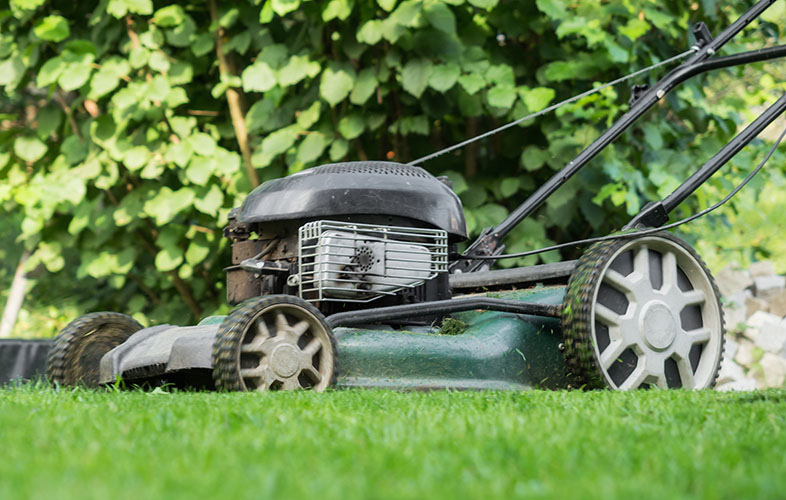Winterizing your yard means taking a few key steps: mowing, feeding, protecting and keeping an eye on your lawn, trees and shrubs. Here’s a step-by-step guide to get it ready for winter.
Feeding Your Lawn and Landscape Before Winter (Winter Fertilization)
Proper fertilization helps grass store energy for a strong spring comeback. Follow these tips for success:
- Apply your final fertilization while soil temperatures are still above 50 degrees
- Focus on feeding vulnerable plants, such as evergreens and newly transplanted shrubs or trees
- Use a balanced fertilizer designed for your area that contains nitrogen and potassium
The Last Mow Before Winter (Best Practices)
The final mow sets the stage for a healthy winter and spring. Here’s what we recommend:
- Lower your mower deck slightly to shorten grass blades
- Shorter blades reduce the risk of snow mold and matting under snow
- Sharpen the mower blade and continue mowing until growth stops entirely
- Leave grass clippings and leaves on the lawn as natural mulch and nutrient boosters
Pro tip: If your lawn is prone to snow mold, avoid leaving large clumps of leaves or debris on the grass.
Snow Protection: Preventing Damage from Ice and Snowplows
Winter landscapes can pose physical risks to your lawn. Try these top tips:
- Use brightly colored stakes or flags to mark driveways, sidewalks, sprinkler heads and garden beds
- Avoid heavy posts or metal objects that could harm operators or your lawn
- Watch for salt spray from roads and driveways, which can harm soil and grass. Flush affected areas with water to dilute salts
- Protect delicate shrubs and young trees with burlap wraps or temporary barriers
Controlling Winter Weeds and Pests
Winter isn’t a pause in plant health, which means that pests and weeds can still cause damage. Here’s how to keep things in check:
- Treat broadleaf weeds in late fall to reduce spring competition
- Bait for rodents to prevent damage during late-winter snow cover
- Apply horticultural oil to trees and shrubs to target pests before they become active
- Remove debris from garden beds where pests can overwinter
Pro tip: Mulching around shrubs and trees conserves moisture and discourages overwintering pests.


 Branch Finder
Branch Finder
















 Back to all blogs
Back to all blogs

Facebook
X
Youtube
Copy Link
Email